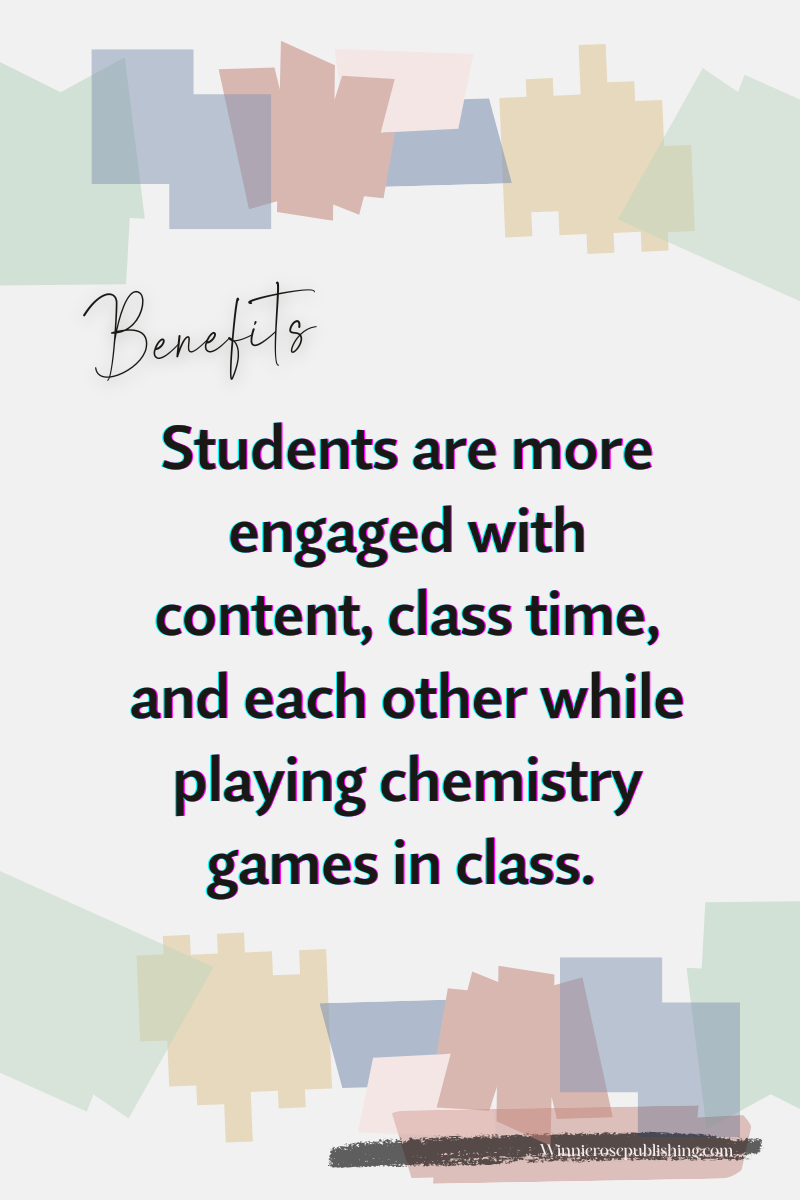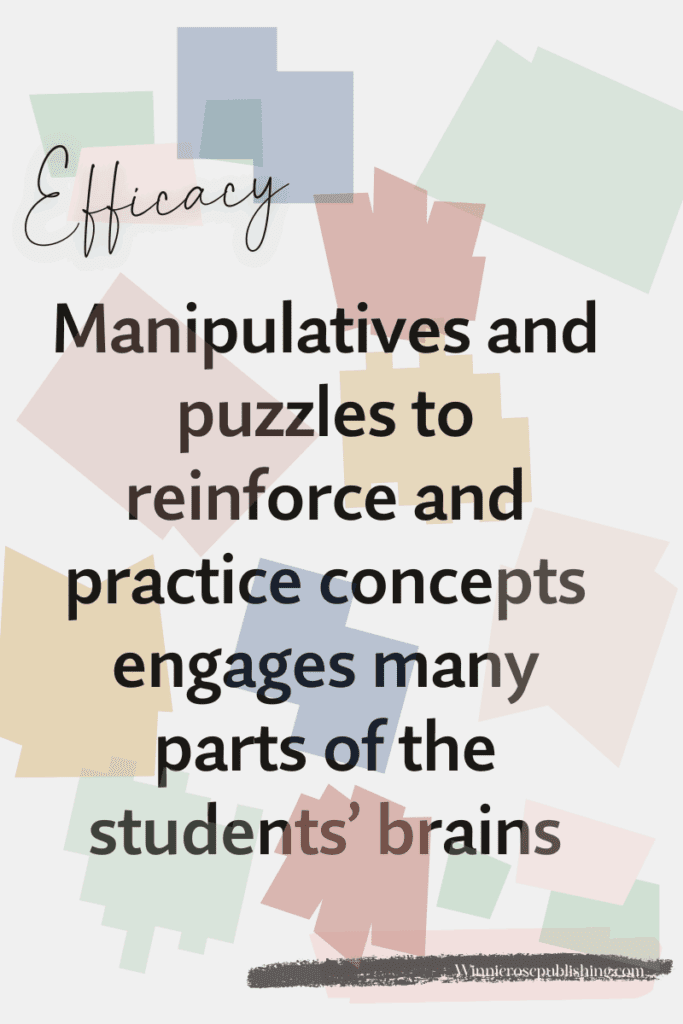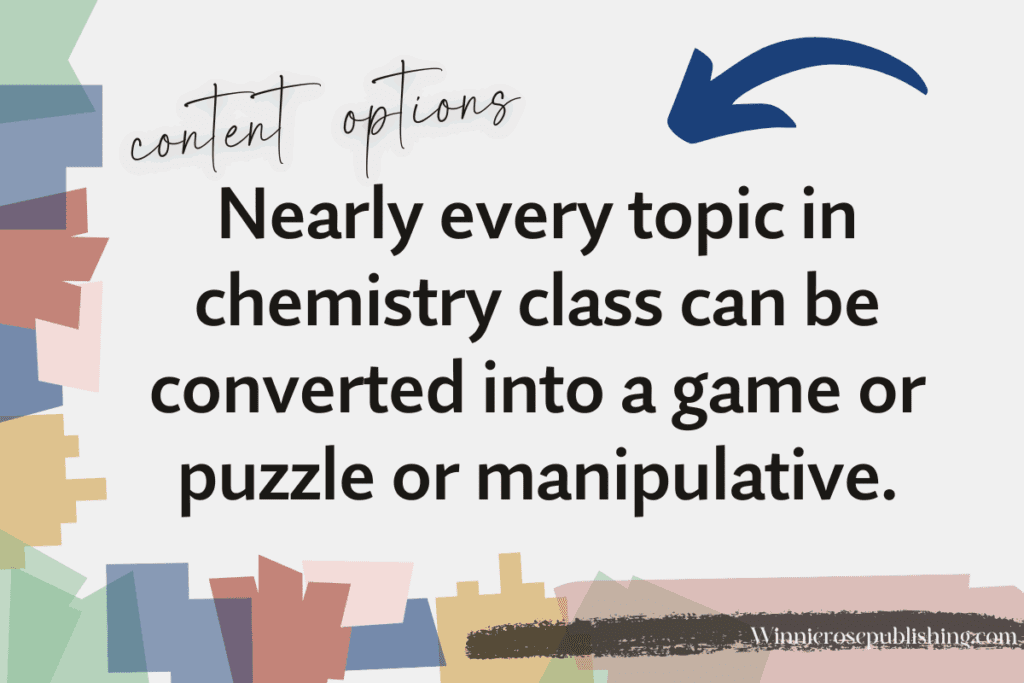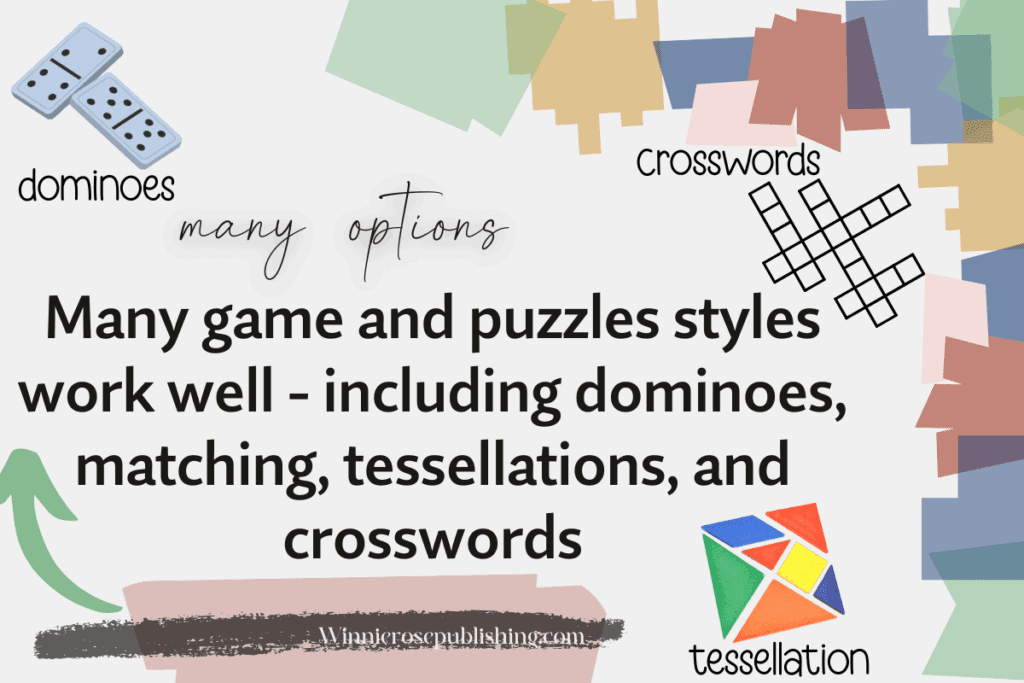
Students need practice with the concepts in chemistry class, and I want to address how do manipulatives help students learn. Manipulatives and puzzles help with that practice in a very different way than a classic worksheet will. Read on to learn why they help students learn and how to implement them in your classroom today. Want some options now, and not read the whole post? I’ve got you. Visit here to see some tried-and-true activities.
Teaching with Manipulatives
There are many topics for which you have an old worksheet in the file cabinet. Maybe your predecessor left those worksheets and you are still using them. Maybe you have created your own worksheets and they have dozens of examples on them. They work. You know they work. Students practice the skill and complete the worksheet. You grade it or provide a key and let them correct it for themselves. Such a worksheet is easy to create. And it is easy to come up with dozens of examples quickly, especially when the concept is simple. Many topics can lead to a plethora of examples, such as ionic nomenclature, counting subatomic particles, converting units, matching up symbols and element names, and classifying reactions.

But you would have to admit that the worksheet is assessing skills at a low to medium level on Bloom’s taxonomy. Wouldn’t it be nice to have activities on a higher level of Bloom’s taxonomy? Having activities that appeal to the students’ competitive nature would be nice, too. Maybe you are interested in having a distribution of activities that target various learning styles. Maybe you do not subscribe to the learning styles theories and want something more interesting than an old worksheet.
Manipulatives Increase Student Engagement
Regardless of your reasons, activities with puzzles or manipulatives or both will increase engagement, improve learning, and prevent the boredom you are feeling from the old-style worksheets. Let’s address these options one at a time – puzzles and manipulatives.
Puzzles appeal to a student’s competitive nature and their creative thinking skills. Puzzles allow students to think more critically about a topic and discover how concepts are interrelated in a variety of ways that a simple worksheet cannot. Often, a puzzle is solved in various ways, and when students are working together, they are negotiating how they want to proceed. In this way, communication skills are improved. Below are some options for puzzle types that lend themselves well to chemistry topics.
If a puzzle or mystery can relate to a real-world example, that is even better. The students can see a concrete application of the material in real time, and they will see the value of learning about the concept. There are lots of options in the area of percent composition and solution concentrations that can be written as mysteries with real-world applications. These manipulatives and puzzles will help students learn and connecting to the real world is s bonus
Chemistry Games and Hands-on Learning
Manipulatives have been around forever. Babies are playing with blocks at a very young age to learn manual dexterity and problem-solving skills. Elementary-aged children use manipulatives in the classroom to make math more understandable and to learn how to pronounce words or add endings to words.

Just because your chemistry students are long past elementary school age, that does not mean they won’t enjoy a hands-on manipulative in class now. Of course, science teachers think of laboratory experiments as the hands-on component that favors the tactile learner. And as a scientist, I believe that science is an active endeavor and not simply a classroom topic. In the current case, I am talking about manipulatives in class that use topics and concepts from class. Some examples include a tessellation matching game that pairs formulas with names of ionic compounds. Or how about practicing parts of the periodic table with dominoes? Maybe your students would like to play the card game ‘WAR’ where they compare values of electronegativity or atomic radius, or ionization energy.
Need more discussion on how kinesthetic activities work well to improve learning and engagement? Check out my recent post on this.
Games For Chemistry Learning
I am a huge proponent of engaging as many parts of the brain as I can when teaching and learning. When students listen and write, that is fine. But if they can talk to each other and also involve their hands in the process, they will learn faster and the information will stick longer and make more sense to them. As the brain is assimilating the information, it is forming connections between the material and multiple sensory inputs at once.
Alright, you have hopefully been convinced that puzzles and manipulatives help students learn more easily. They improve engagement, and students generally enjoy them. Now, how will you get those types of activities worked into your schedule, and how will you use them alongside traditional methods? Read on, my friend.
Teaching with Puzzles in Chemistry Class to Improve Student Learning
When I decided to include puzzles in my teaching, I started with just a couple one semester. I removed a practice worksheet that had a page or two full of boring problems, and I replaced it with a puzzle/mystery that practiced the same content with more interesting examples. On the American Association of Chemistry Teachers site, I found an empirical formula activity that has the students calculate the formulas of compounds found at a ‘crime scene’ and allows them to match up the crime and criminal. The students work in pairs and solve the problems on cards that are written in a ‘Scooby Doo’ style and they complete the puzzle.

On another occasion, I wrote a thermodynamics escape room that is Google-based. The questions related to the energy involved in phase changes and the calorimetry of heating or cooling a substance. The student showed their work on paper, and entered their answer into a Google form, before they were shown the next question. I used the scores from this to add a couple of points of extra credit to the test on that content. Because the escape room was entirely Google Form-based, it had no physical objects to worry about. There were no supplies to purchase or prepare.
Specific Examples of Chemistry Manipulatives to Improve Student Learning
If your goal is to reinforce vocabulary, a crossword puzzle or cryptogram might be just the thing. This activity uses terms related to the periodic table and the names of the elements.
Including manipulatives is a bit more challenging, in my opinion, and there is a bit more prep work involved. But once that work is done, the items (game pieces, cards, tiles, etc) are saved for the next year. When year 2 comes along, there is zero work besides finding which drawer you left the game pieces in.

Some examples that I have used with great success include this tile matching game that has the student match up names to formulas of covalent compounds to create a specific two-dimensional shape. The hexagon shapes have either a name or a formula on each of the six edges. The student arranges the tiles so that anywhere the edges touch, it creates a matching pair. Nomenclature lends itself well to this type of puzzle, as each name has one specific matching formula. For a fuller discussion of the benefits of matching games in chemistry, see this post.
More Activities that Include Chemistry Games
Another option is dominoes, such as this set, which has an element and a valence electron count on each domino. All the elements are main group (columns 1, 2, and 13-18), and the possible options for valence electrons are the values 1 through 8. Each player lays down a domino to add onto the ones already played to continue building. This works exactly like a regular domino game, where the player matches up the ends to previously played pieces. This allows practice of the concepts, along with including competition.
You can be kept in the loop about my projects and receive some free resources! Visit here. I promise that manipulatives will help students learn chemistry. And everyone will have more fun as well.




Pingback:How to Use Exciting Periodic Table Decoration for Your Chemistry Classroom - WinnieRosePublishing